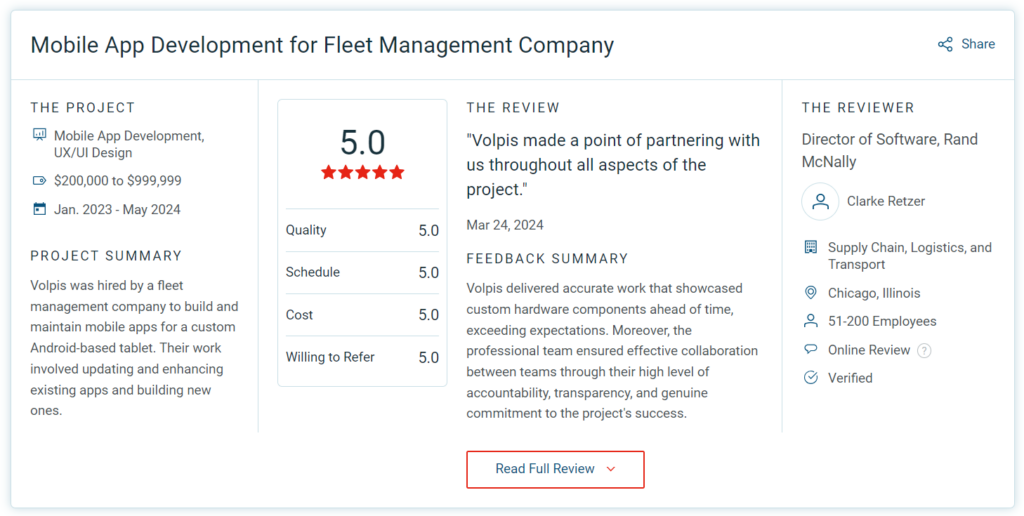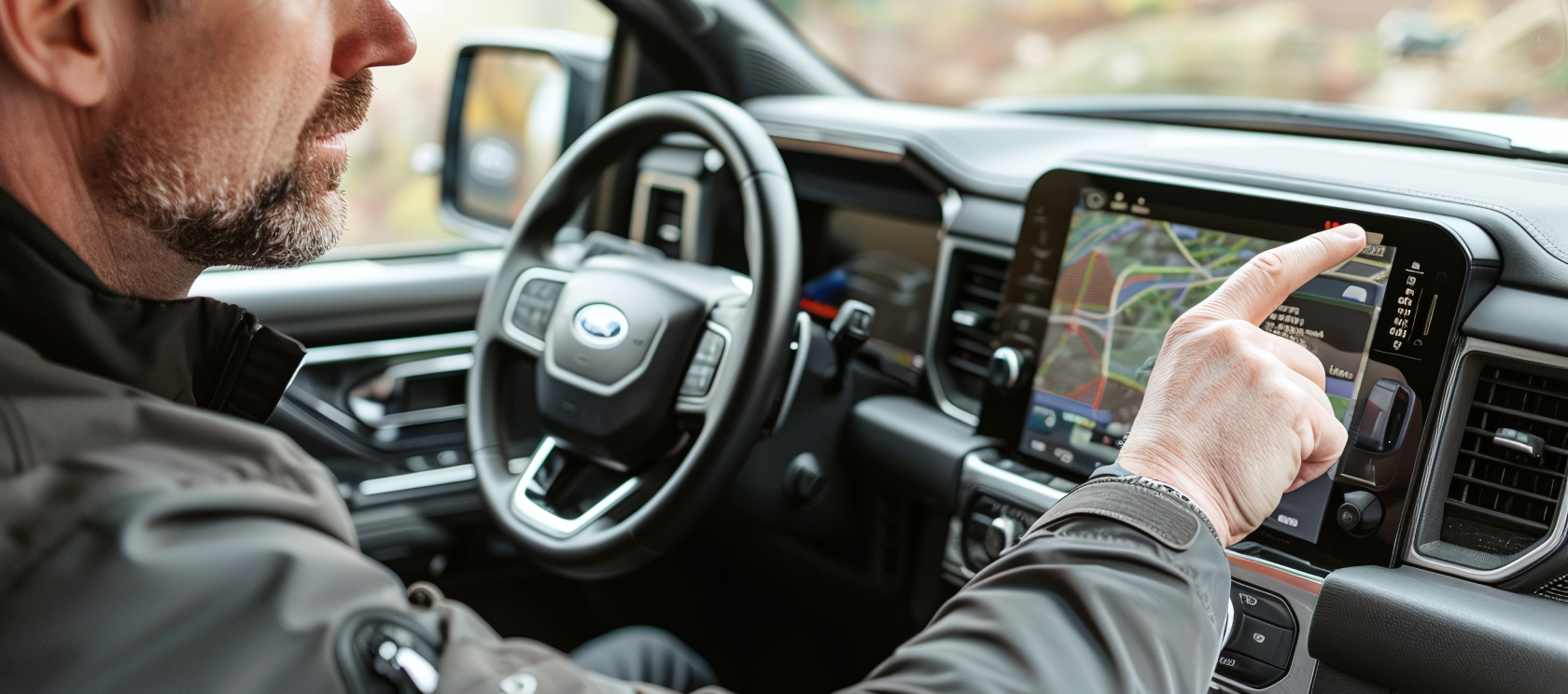Fleet driver behavior monitoring is a challenge that often keeps fleet managers awake at night. Not only does inappropriate driving behavior impact safety, fuel consumption, and vehicle wear and tear, it can also tarnish the company’s reputation. This is where advanced fleet management software comes into play, providing a comprehensive solution for driver behaviour management. Understanding how to improve driver behavior with fleet management software can significantly enhance safety, reduce costs, and increase the overall efficiency of your fleet.
Driver behavior encompasses the wide array of actions, reactions, and decisions a driver makes while operating a vehicle. This spans from their ability to adapt to different road and traffic conditions to how they respond under pressure or fatigue.
Despite stringent hiring processes and rigorous training, lapses in driver behavior persist, often due to a lack of proper monitoring, feedback, and incentive systems.
And in this article, we will explore how fleet management software can help enhance driver behavior. We will delve into the core challenges that fleet managers often encounter and demonstrate how these hurdles can be overcome using cutting-edge technology and proven strategies.
At Volpis, we understand the paramount importance of driver behavior. We are committed to crafting tailor-made fleet management solutions that prioritize responsible driver behavior and support companies in fostering a safe driving culture. If you’ll have any questions after reading this article, please don’t hesitate to reach out to us with any questions or concerns.
How to improve driver behavior with the help of fleet management software: a two-stage driver behaviour management process
By providing real-time data, actionable insights, and customized training modules, fleet management software can be instrumental in fostering a culture of safety among your drivers. Here’s a systematic approach divided into two main stages: preparation and behavior/performance tracking.
Stage 1 – Preparation
This stage is about setting up the tools and goals for driver behaviour management to ensure that drivers are monitored, evaluated, and trained effectively.
a) Determine the parameters to monitor
You’ll need to Identify performance indicators such as speed, harsh braking, cornering, engine idling, and more. By carefully selecting these metrics, fleet managers can gain a comprehensive view of driver behavior and focus on areas that need improvement.
b) Install monitoring devices
Depending on the parameters you’ve chosen, you may need to install a telematics system and/or cameras, as it all depends on what you want to track. Telematics systems offer a wealth of data to track driver performance, such as speed, over-revving, harsh braking, harsh cornering, and engine idling. You can utilize these data points to identify problematic patterns and devise improvement strategies.
By combining telematic devices with AI and cameras, fleet management systems can distinguish between necessary actions and poor driving habits. For instance, harsh braking to avoid hitting a dog that has run onto the road would be recognized as a life-saving reaction rather than a driving error.
c) Measure current drivers’ behavior/performance
Through fleet management software, you can analyze travel logs to identify dangerous driving patterns over time for future reference, gaining insights into habits like frequent speeding, erratic braking, or consistent overtime idling.
By identifying these patterns, you can take targeted actions to address these issues, providing tailored feedback and training to your drivers. Travel logs give a detailed account of driving activity. Your company can analyze travel logs to identify behavioral patterns and tailor their training programs to address specific behaviors.
d) Set clear goals
- Develop a comprehensive safety policy informed by telematics data
You can utilize vehicle telematics data to develop a robust safety policy, leveraging valuable insights to proactively address and mitigate risky driving behaviors within the fleet. This policy will set the foundation for all subsequent actions, translating raw data into actionable guidelines that prioritize driver and vehicle safety.
- Define explicit objectives and ensure your drivers understand the parameters by which they are being evaluated
It’s important to promote transparency about driver evaluation methods. By defining explicit objectives, such as reducing harsh braking incidents, drivers have a tangible target to strive towards. This establishes a sense of purpose and accountability, encouraging drivers to take active measures to improve their performance and contribute to the broader objectives of the fleet. Fleet safety managers can use driver scorecards to identify safe drivers and implement strategies to improve the behavior of others.
- Promote healthy competition and reward drivers based on performance
You can provide accurate, performance-based feedback, set realistic goals, and offer reward programs. This not only motivates drivers to self correct but also fosters a sense of accomplishment. A sense of competition coupled with financial incentives can boost driver engagement, morale, and dedication, fostering a culture of excellence. Implementing recognition programs that acknowledge and reward good drivers further enhances the sense of competition and motivation, instilling a culture of excellence and continuous improvement within the fleet.
e) Develop training programs
Ongoing training programs, informed by drivers’ individual performance data, can address specific areas where improvement is needed. These tailored programs, informed by telematics data, focus on improving those areas of driving behavior that a driver struggles with, such as overspeeding. Such training programs are incredibly effective as they directly address the specific weaknesses of each driver.
f) Leverage real-time alerts for immediate corrective action
Fleet management software provides real-time alerts of any malfunctions or problematic driving behavior. This allows you to instantly rectify issues, reducing the risk of breakdowns or accidents. For instance, you can swiftly respond if a driver is accelerating abruptly, speeding, hard-braking, sharp-turning, or tailgating.
Stage 2 – Behaviour/performance tracking
This stage is about continuous monitoring, feedback, and improvement of driving behavior.
a) Measure your results
Measuring the results is an integral part of tracking and improving driver behavior. By constantly monitoring driver performance and analyzing data, fleet managers can gain deep insights into their drivers’ habits and pinpoint dangerous driving patterns that might lead to accidents. Through the careful analysis of travel logs, they can also identify specific behavioral patterns, allowing for more targeted interventions to enhance overall safety.
b) Offer constructive feedback
Constructive feedback serves as a valuable tool for driver improvement and education. By utilizing real-time data, managers can provide drivers with specific, actionable feedback on where they are excelling and where there is room for improvement. This open communication reinforces good driving habits and ensures that areas of concern are addressed promptly, fostering an environment of continuous learning and growth.
c) Conduct/update customized training
Customized training programs are essential to achieving consistent improvement in driver behavior. These programs are designed to address specific areas where a driver might be struggling, allowing for targeted coaching and support. By continuously updating the training modules based on the latest data and performance metrics, fleet managers can ensure that the training remains relevant and effective, leading to sustained improvements in driver performance.
d) Continue to track drivers’ behavior to identify dangerous patterns and high-risk areas
The continuous tracking of drivers’ behavior is essential for identifying dangerous patterns and high-risk areas within the fleet. By generating detailed reports, fleet managers can highlight individuals exhibiting risky behaviors more frequently and recognize specific routes or times when these behaviors tend to increase. This ongoing monitoring not only helps in making informed decisions about training needs or route planning but also allows managers to proactively manage and mitigate potential risks, ensuring the safety of both drivers and vehicles.
Keep in mind: Regular maintenance checks are vital not only for vehicle upkeep but also for fostering responsible and accountable driver behavior. By employing fleet management software to schedule regular inspections, managers can ensure that drivers are actively involved in the care of their vehicles. This also includes training drivers to perform basic daily checks and report any issues without delay. Such practices not only promote a culture of care and accountability among drivers but also emphasize their integral role in maintaining the overall safety and functionality of the fleet. By connecting vehicle maintenance with driver responsibility, the fleet cultivates a shared commitment to excellence and safety. Also, you can implement predictive fleet maintenance, a data-driven approach designed to proactively identify vehicle issues.
Technologies and tools for driver behaviour management
Fleet management software systems employ a range of sophisticated tools for real-time driver behaviour management. These systems offer invaluable insights into driver performance, allowing for informed decision-making and targeted interventions. Here are some ways fleet management software effectively monitors driver behavior:
Telematics data collection
Fleet management software integrates telematics devices in vehicles to gather essential data on driving patterns, vehicle speed, braking, and more. These data points offer a comprehensive view of driver behavior and vehicle performance.
GPS tracking
This feature of fleet management software allows fleet managers to keep an eye on the precise location and movement of vehicles. The system uses GPS (Global Positioning System) technology to track the latitude, longitude, and speed of each vehicle, providing a comprehensive view of their activities. This data is transmitted back to the fleet management software, allowing managers to visualize the fleet’s entire route, identify deviations, and optimize routes for timely deliveries. Additionally, GPS tracking helps improve the accountability of drivers, as managers can ensure drivers follow designated routes and adhere to schedules.
Geofencing
It allows fleet managers to define virtual boundaries or geographical zones on a map. These predefined boundaries can be specific locations such as customer sites, depots, or no-go areas. When a vehicle equipped with fleet management software enters or exits these predefined zones, the system triggers an alert, notifying fleet managers of the event in real time. Geofencing enables better monitoring of vehicle movements, helps prevent unauthorized use of vehicles, and aids in enforcing company policies or adherence to specific delivery routes.
Integration with dashcams
Integrating dashcams with fleet management software provides real-time video footage of drivers’ actions behind the wheel. This visual data aids in understanding the context of safety events and provides a comprehensive view of driver behavior. Additionally, with the help of AI, it’s possible to discern whether sudden braking was indeed necessary (for instance, if a person walked onto the road) or not.
Driver scoring and performance reports
AI-powered algorithms can analyze historical driver behavior data to identify behavioral patterns, generate driver scores & performance reports. These reports provide a clear and objective assessment of each driver’s driving habits, highlighting areas for improvement. This objective evaluation allows managers to identify drivers needing additional training and motivate others through healthy competition. With predictive analytics, managers can anticipate potential risks and address them before they escalate into safety issues. For example, AI-driven systems can alert fleet managers when a driver consistently exhibits signs of drowsy or distracted driving.
Fatigue and distraction monitoring
Advanced AI technologies can watch for signs of fatigue or distraction. If detected, the system can alert the driver or fleet manager, prompting them to take necessary action.
By harnessing the power of technology, fleet managers can proactively identify high-risk driving behaviors, make data-driven decisions, tailor training programs more effectively, and foster a culture of responsibility among their drivers. Fleet management software is an indispensable tool in promoting safer driving practices, reducing accidents, and ultimately optimizing fleet operations. To learn more about the process of building a custom fleet management system, please check out this in-depth guide on fleet management software engineering.
Top 11 most common risky driving behaviors and how to eradicate them
Understanding the riskiest driving behaviors is a crucial step toward enhancing driver safety and overall fleet management. Here are some examples of actions that are considered highly risky and should be monitored closely:
1) Abrupt acceleration and deceleration
This behavior can indicate aggressive or impatient driving and can lead to accidents.
How to eradicate it: Implementing AI-driven monitoring systems that alert drivers to maintain steady acceleration and deceleration can foster smoother, safer driving habits.
2) Sudden braking and halting
Not only can this cause rear-end collisions, but it also suggests a lack of anticipation or attention to the road ahead.
How to eradicate it: Utilizing real-time alert systems to warn drivers of upcoming obstructions and guiding them to reduce speed gradually can minimize this behavior. Also, you can use advanced telematics systems to coach drivers on safe following distances and predict road conditions.
3) Severe cornering
Hard turns can unsettle the vehicle and increase the chance of rollovers, particularly in high-sided vehicles.
How to eradicate it: Advanced steering control systems that use AI to calculate optimal turning speeds can help prevent severe cornering. You can also implement AI-powered coaching that alerts drivers during severe cornering, offering guidance on safer steering techniques.
4) Neglecting seatbelt use
One of the most basic fleet safety measures, not wearing a seatbelt can have severe consequences in the event of a collision.
How to eradicate it: Implementing safety systems that notify drivers when seat belts are not fastened can promote adherence to this essential safety practice.
5) Exceeding speed limits
High speeds reduce the driver’s control over the vehicle and increase the severity of any potential accidents.
How to eradicate it: You can utilize AI-based monitoring tools that alert drivers when exceeding speed limits, integrating real-time road data for adaptive speed control.
6) Omitting signals during lane changes
This can cause confusion among other road users, leading to accidents.
How to eradicate it: You can employ advanced signal detection technology that prompts drivers to use turn signals appropriately.
7) Failure to yield to traffic or pedestrians
Ignoring right-of-way rules can easily result in collisions.
How to eradicate it: You can implement camera systems with AI recognition to detect pedestrians and provide warnings to drivers.
8) Following too closely (tailgating)
This risky behavior reduces the available reaction time, increasing the likelihood of an accident if the leading vehicle stops suddenly.
How to eradicate it: You can utilize AI-driven adaptive cruise control systems that help to maintain safe following distances.
9) Inappropriate lane changes or cutting off other vehicles
This can catch other drivers off guard, causing them to swerve or brake suddenly, which may result in an accident.
How to eradicate it: You can integrate lane assistance technologies that provide warnings and guidance during lane changes.
10) Driving while distracted
Engaging in texting, talking on the phone, eating, or using a GPS, can make it difficult for drivers to react promptly to sudden changes in road conditions or unexpected maneuvers by other drivers.
How to eradicate it: You can implement monitoring systems that detect and alert drivers of distracted behavior.
11) Operating vehicles under fatigue or drowsiness
This can be as dangerous as driving under the influence of alcohol or drugs. Lack of sleep can lead to microsleep episodes, where the driver may fall asleep for a few seconds without even realizing it. This creates a significant risk of losing control of the vehicle or failing to respond to hazards.
How to eradicate it: You can employ fatigue monitoring systems that detect signs of drowsiness and alert drivers to take a break.
These risky behaviors, when left unaddressed, can compromise the well-being of not just the drivers, but also pedestrians. Monitoring and correcting these behaviors using fleet management software and AI-powered tools is an essential task for all fleet managers.
What causes unsafe driving behavior?
Dangerous driving behavior can result from various factors, affecting driver performance and increasing the risk of accidents. Fleet managers must be aware of these underlying causes to implement targeted interventions and foster safer driving practices. Here are some common factors that contribute to unsafe driving behavior:
Inattentiveness
Distracted driving is a significant cause of accidents. Drivers may divert their attention from the road due to mobile phones, navigation systems, eating, adjusting the radio, or engaging in other activities while driving.
Aggressive driving
Reckless behavior, such as overtaking, tailgating, or ignoring traffic rules, significantly increases the likelihood of collisions.
Driver tiredness
Fatigued drivers have reduced attention, slower reaction times, and impaired decision-making, making them more prone to accidents.
Driver’s skill level
Inexperienced drivers may exhibit unsafe behaviors due to less familiarity with challenging road conditions.
Operating a vehicle while intoxicated
Driving while intoxicated, whether due to alcohol, prescription medications, illegal narcotics, or over-the-counter medicines, significantly impairs a driver’s ability to operate a vehicle safely.
By recognizing these contributing factors, fleet managers can implement comprehensive driver training programs, establish strict policies against distracted or reckless driving, and encourage a culture of responsibility among their drivers. Combining these efforts with the monitoring capabilities of fleet management software and AI-powered tools can help reduce accident rates and create a safer working environment for both drivers and the public.
Benefits of implementing fleet management software for fleet driver behavior monitoring
Fleet management software offers a myriad of advantages when it comes to monitoring and enhancing driver behavior. Implementing such software empowers fleet managers to proactively address potential issues, ensure safety, and streamline operations.
1/ Improve driver behavior and safety
- Gain visibility: Fleet management software provides real-time visibility into driver behavior, enabling managers to stay informed and take immediate action when necessary.
- Keep drivers safe and healthy: Real-time notifications provided by the software help protect drivers by promptly alerting them to unsafe behaviors.
- Prevent accidents: Monitoring driver behavior helps identify unsafe habits, enabling managers to proactively implement training and corrective measures, preventing accidents before they occur.
2/ Enhance vehicle performance and longevity
- Cut wear and tear: By reducing instances of harsh acceleration, over-revving, and over-cornering, fleet management software helps cut down on vehicle wear and tear, thus extending the life of the fleet.
- Enable proactive maintenance: Regular maintenance checks, scheduled through fleet management software, help identify potential issues before they become significant problems, thus enhancing vehicle reliability and performance.
- Reduce engine stress: By monitoring and alerting to unfavorable driving behaviors like excessive speeding or rapid starts and stops, fleet management software assists in maintaining engine health, further ensuring the vehicles’ longevity.
3/ Improve profitability
- Reduce engine idling costs: Fleet management software helps identify and address instances of excessive engine idling, reducing fuel consumption and associated costs.
- Save on running costs: Fleet management software promotes safe driving behavior, leading to fuel savings.
- Minimize insurance costs: By promoting safe driving practices, fleet management software can help lower insurance costs. Furthermore, by providing accurate data on driver behavior and safety incidents, it can expedite the processing of insurance claims, leading to quicker resolution and minimizing potential financial losses.
- Improved efficiency: By reducing fuel and maintenance costs and minimizing accidents, fleet management software ultimately enhances overall fleet profitability.
4/ Ensure legal compliance and proper dispute resolution
- Ensure compliance: With built-in features to track hours-of-service regulations and other legal requirements, the software helps ensure full compliance with the law.
- Reduce false claims: Having access to video footage through fleet management software allows fleet managers to quickly resolve disputes and prevent false claims.
- Simplify record-keeping: Fleet management software centralizes all necessary documentation and driver information, making it easier to manage and access, which is essential for legal compliance and efficient handling of any disputes or audits.
5/ Foster responsibility and accountability
- Enhance accountability: Fleet management software encourages driver accountability, promoting a culture of responsibility and safety within the fleet.
- Encourage self-monitoring: By providing drivers with access to their own performance data, fleet management software enables them to actively participate in their improvement, fostering a sense of ownership and responsibility.
- Build trust through transparency: The transparent reporting of data not only between managers and drivers but also among drivers fosters a culture of trust. It creates a fair and clear system where everyone knows what is expected and how performance is assessed, contributing to a responsible and accountable team.
6/ Prevent accidents and associated losses
- Reduce goods losses: Safer driving practices result in fewer accidents, reducing the chances of damage or loss of delivered goods.
- Enhance road safety: By monitoring and correcting risky driving behaviors, fleet management software helps in creating a safer road environment for everyone, minimizing the likelihood of accidents.
- Facilitate proactive interventions: With real-time alerts for hazardous driving behavior, fleet managers can intervene promptly, preventing potential accidents and enhancing overall safety on the roads.
7/ Boost customer satisfaction and company’s reputation
- Improve customer satisfaction: Efficient and safe driving practices lead to timely deliveries and better service, enhancing customer satisfaction.
- Maintain a better business reputation: Implementing fleet management software demonstrates a commitment to safety and responsible fleet management, enhancing the company’s reputation.
- Strengthen client trust: By ensuring reliable and punctual deliveries through monitored driving behavior, fleet management software builds trust with clients. This sense of reliability can lead to repeat business and positive word-of-mouth, further bolstering the company’s reputation and client satisfaction.
By harnessing these benefits, fleet managers can optimize their operations, enhance safety, and cultivate a culture of excellence within their fleets, ultimately leading to a more efficient and successful fleet management strategy.
How we develop custom fleet management systems to help companies improve their drivers’ behavior
Regularly ranked among the Top Custom Software Development Companies on Clutch, Volpis has been leveraging the power of technology to assist business owners in achieving unparalleled milestones. Our commitment to excellence is reflected in the glowing reviews from our customers, who consistently praise our dedication to delivering exceptional results.

Read more reviews from our valuable customers here
With our customer-centric approach and cutting-edge technology, we empower companies to proactively protect their drivers, reduce accidents, and enhance overall fleet performance. When it comes to keeping your driver behavior up to the highest standards Volpis is your trusted partner.
Our experienced team can develop a custom fleet management software solution tailored to your unique needs. We’ve assisted many reputable companies in optimizing their fleet operations and minimizing risks, just take a look at our recent projects.
We’d love to answer any questions you may have. You can reach out to us via info@volpis.com with any questions or to explore how we can be part of your journey.
Questions & Answers
FAQ
How can I improve my drivers’ behavior?
Improving driver behavior can be achieved through the implementation of fleet management software that monitors driving habits, provides real-time feedback, and offers personalized coaching to drivers, promoting safer and more responsible driving practices.
How would you optimize effectiveness in fleet management?
To optimize effectiveness in fleet management, implementing a comprehensive fleet management software solution is essential. This system enables better monitoring of driver performance, route optimization, maintenance scheduling, and compliance management, leading to reduced operational costs.
How do fleet management software solutions help the fleet industry?
Fleet management software solutions streamline operations by providing real-time vehicle tracking, driver behavior monitoring, automated reporting, and predictive analytics, leading to enhanced safety and improved driver engagement.
What is the benefit of using a fleet management system?
The benefits of using a fleet management system include improved driver safety, reduced fuel and maintenance costs, optimized vehicle utilization, enhanced compliance, and data-driven decision-making, leading to a more successful and productive fleet operation.
What are the examples of driver behavior?
Driver behavior includes actions like speeding, harsh braking, abrupt acceleration, tailgating, failing to use turn signals, and driving under the influence. Driver behavior encompasses the intentional and unintentional actions and characteristics exhibited by a driver while operating a vehicle. Various factors, including age, experience, gender, attitude, emotions, fatigue, drowsiness, and driving conditions, can influence or change a driver’s behavior
What is a driver behaviour monitoring system?
A driver behavior monitoring system is a technology that tracks and analyzes how drivers operate vehicles, including aspects like speed, braking, and adherence to traffic laws.
How to track driver behavior?
To track driver behavior, fleet management software utilizes telematics devices in vehicles to collect data on driving patterns, speed, braking, and more. This data is then analyzed to provide insights into driver behavior and identify areas for improvement.
What is driver management in fleet management?
Driver management in fleet management refers to the processes and strategies used to oversee and optimize the performance, safety, and behavior of drivers operating vehicles in a fleet. It involves monitoring driver behavior, providing training and feedback, and implementing policies to ensure compliance with safety regulations and efficient fleet operations.
What technology do some companies use to monitor driver behavior?
Companies use telematics systems, GPS tracking, dashcams, and AI-powered algorithms to monitor driver behavior. These technologies provide real-time data on driving habits such as speed, braking, and adherence to traffic laws, allowing companies to assess and improve driver performance.
How do you monitor a fleet of vehicles?
To monitor a fleet of vehicles, companies use fleet management software that integrates various technologies such as GPS tracking, telematics, and onboard diagnostics. These systems provide real-time data on vehicle location, performance, and driver behavior, allowing managers to track vehicles, optimize routes, and ensure safety and efficiency.
What sensors are used to detect driving behavior?
Fleet management systems commonly use a variety of sensors, including accelerometers, gyroscopes, magnetometers, and GPS sensors. These sensors can track factors such as speed, acceleration, braking, cornering, and vehicle orientation, providing insights into how drivers are operating their vehicles.

Kostya Khuta, the CEO of Volpis, is an expert in crafting custom software solutions for the Fleet Management, Logistics, and Transportation industry. With over 8 years of experience, he leads the way in delivering innovative and tailored solutions to meet industry-specific needs.





